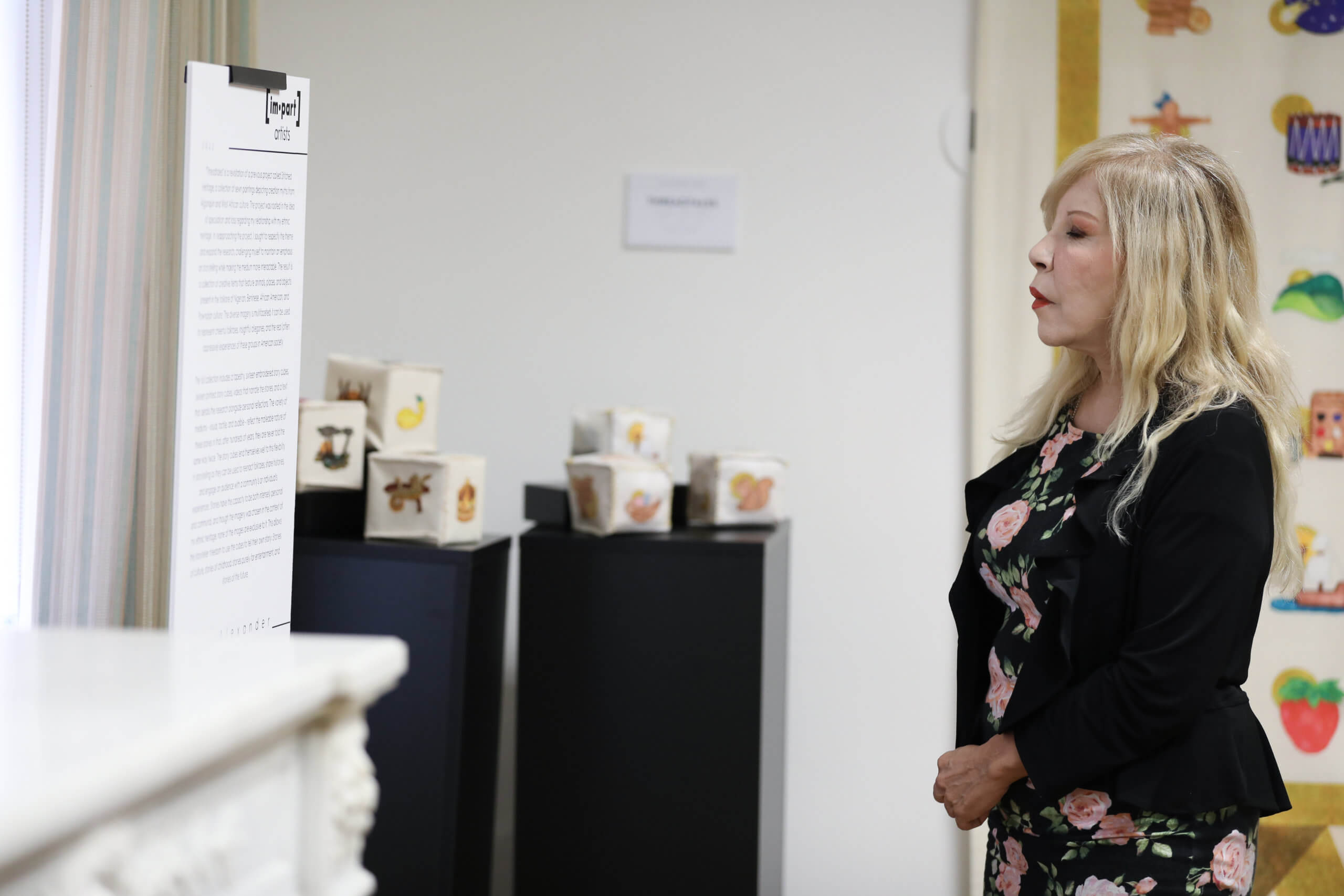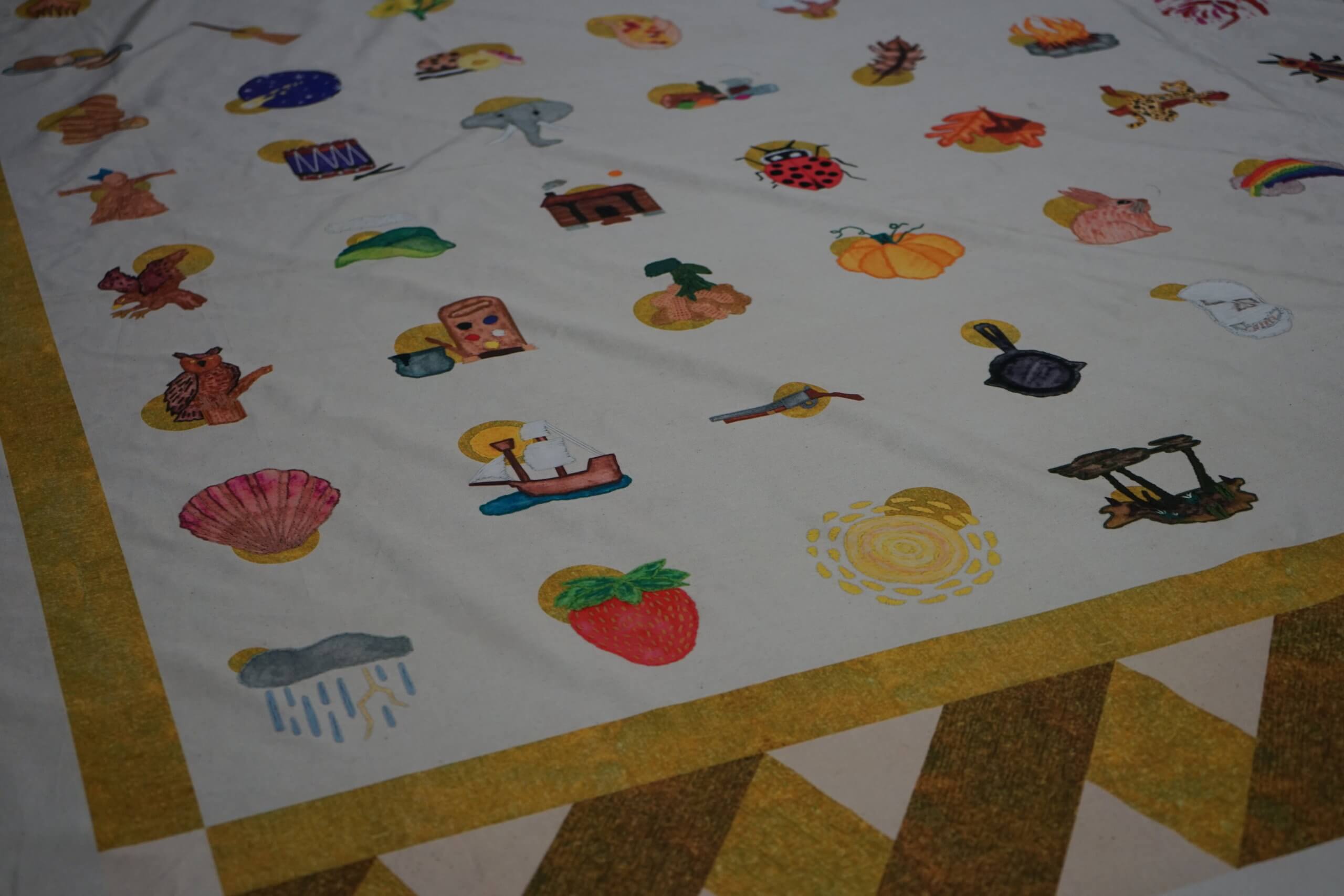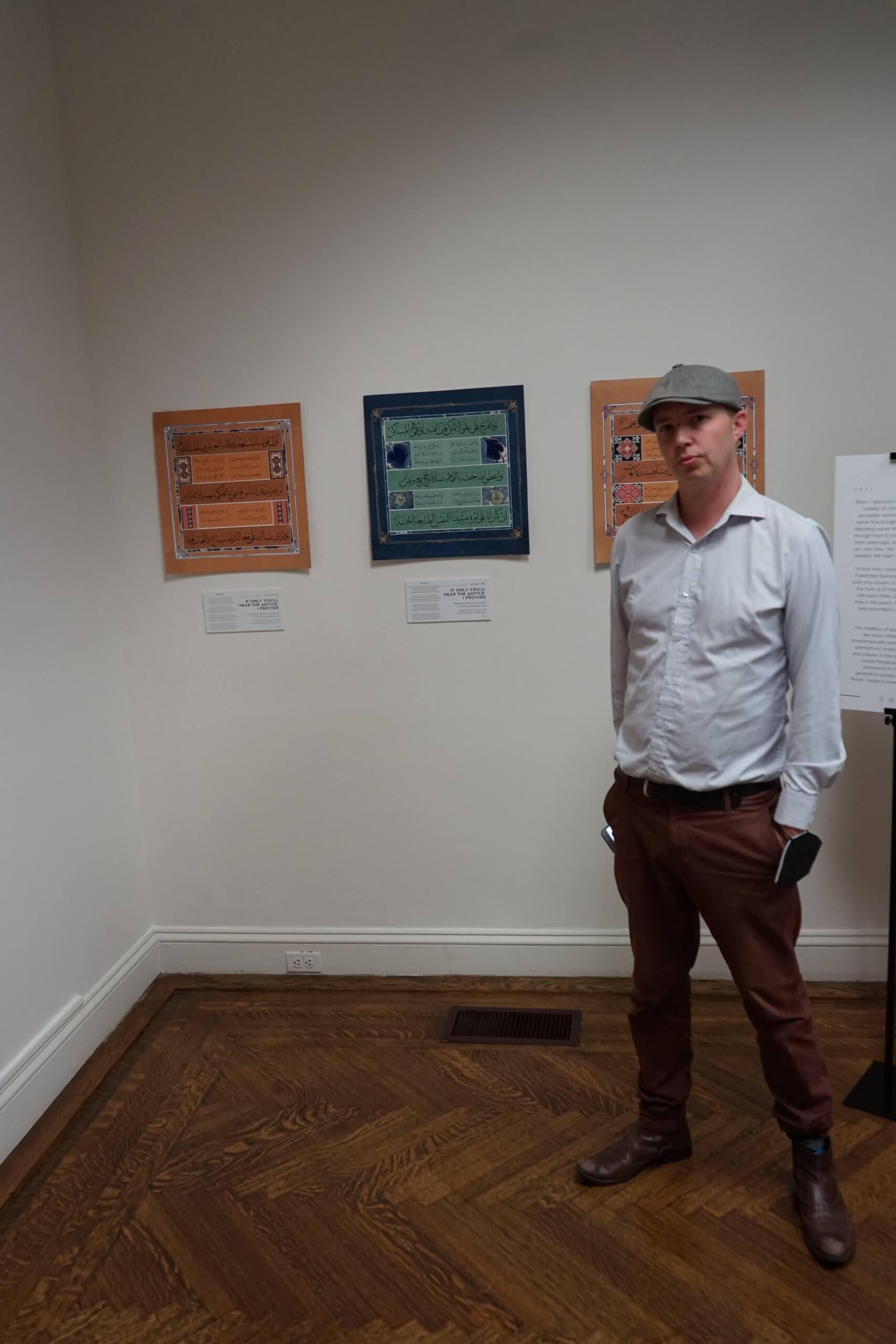2021 IMPART Artist Grant Winners Opening Reception
On September 16th, Qatar America Institute for Culture hosted the official opening reception for the 2021 IMPART Artist Grant winners’ exhibition showcasing their artwork in QAIC’s headquarters. IMPART is a platform created to celebrate the impact of QAIC’s art and cultural programs in our local and international communities. The grant winners who exhibited their work are Patricia Daher, Josh Berer and Nia Alexander Campbell.
We want to thank all who participated and congratulate the grantees. You can learn more about this year’s IMPART grant application here: https://qataramerica.org/impart-grants/.
2021 Grantees:
Josh Berer:
When I approach creating a piece of calligraphy, I do so with several concepts in mind. These are often counterbalancing principles working within a traditional Islamic aesthetic while simultaneously bringing in subtle elements from an American design lens. Elevating voices that are not my own while at the same time speaking through them to express my ideas and values. Expressing thoughts from years ago while using the wisdom carried within to comment on our own time. The work thus straddles several worlds: the past and the present, the West and the East, the tradition and the contemporary.
To that end, I chose to present in this series of Thuluth-Naskh kitaas a Palestinian Bedouin oral poem composed by Muslih Salim Ibn ‘Aamr, poet and shaykh of the Tiyaha Bedouin in the mid-20th century. It takes the form of 21 rhyming quatrains, in which the first three lines rhyme and the fourth line rhymes with all the other fourth lines in the poem. It was composed by Shaykh Ibn ‘Aamr in the 1930s, recorded in the 1980s and translated to English by American ethnographer Clinton Bailey.
The tradition of publicly-recited, community-transmitted oral poems, like many other aspects of traditional Bedouin life, has been threatened with extinction in the modern era due largely to concerted attempts by Israeli authorities to curtail traditional Bedouin lifestyles and culture in the name of modernization and an act of deliberate social marginalization. As an oral body of work, few physical testaments to these profound poems exist. As the older generation passes on, the legacy of this body of literature is under threat.
Patricia Daher:
“I challenge how we view reality to invite a change in perspective.”
My work explores patterns and concepts through repetition, vibrant color combinations, and symbolism. The images I choose are autobiographical, inspired by my surroundings, experiences, mathematics, science, micro and macro, ancient history, and nature.
The alphabet is the DNA of communication and repetition, a transcending tool that illustrates the vibration of each letter and word. The Alphabet Collection is an extensive study of the fabric of world languages, past and present. This Collection started in 2012 and is inspired by the worldview of a dyslexic student I was teaching then. I was fascinated by his ability to see the letters differently, in a non-linear manner, rotating in all directions and even flying off the paper. This propelled me to explore world alphabets as image and form.
The phonetic alphabets the world uses today originated in the Middle East as abstracted images derived from Egyptian hieroglyphs. We see and utilize letters daily, repeatedly in the same position. The mundane nature of our interaction with the letter ‘ha’ allows us to ignore their essence as shapes and images, their true nature.
Through these conceptual works, I explore and experiment with the visual nature of the Arabic Alphabet, its letters, words, forms, and sequence. Unique to the Arabic Alphabet are its two known lines, Abjad and Hija2i. Abjad is the older sequence derived from ancient alphabets, still used today for numbering, and Hija2i is based on the arrangement of the letters by form, derived from the sounds and shapes of the letters. The colors I chose to express these concepts are inspired by my trip to Qatar as part of the QAIC artist delegation of March 2022.
Nia Alexander Campbell:
“Threadtales” is a revisitation of a previous project called Stitched Heritage, a collection of sewn paintings depicting creation myths from Algonquin and West African culture. The project was rooted in the idea of speculation and loss regarding my relationship with my ethnic heritage. In reapproaching the project, I sought to respecify the theme and expand the research, challenging myself to maintain an emphasis on storytelling while making the medium more interactable. The result is a collection of creative items that feature animals, places, and objects in Nigerian, Beninese, African American, and Powhatan culture folklore. The diverse imagery is multifaceted; it can represent cheerful folktales, insightful allegories, and these groups’ real (often oppressive) experiences in American society.
The entire collection includes a tapestry, sixteen embroidered story cubes, sixteen printed story cubes, videos that narrate the stories, and a text that details the research alongside personal reflections. The variety of mediums – visual, tactile, and audible – reflect the malleable nature of these stories in that, after hundreds of years, they are never told the same way twice. The story cubes lend themselves well to this flexibility in storytelling as they can be used to reenact folktales, share histories, and engage an audience with a community’s or individual’s experiences. Stories can be both intensely personal and communal, and though the imagery was chosen in the context of my ethnic heritage, none of the images are exclusive to it. This allows the storyteller freedom to use the four cubes to tell their own story: stories of culture, stories of childhood, stories purely for entertainment, and stories of the future.












